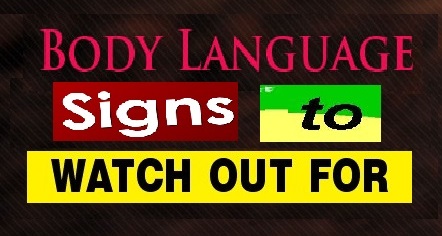 Body Language Signs to Watch Out For
Body Language Signs to Watch Out For
Did you know that communication is actually only 10% verbal? The majority of what we communicate can be found in the tone of our voice (30%) and our actions (60%). Your prospect’s behaviour provides clues as to how they’re feeling, which in turn tells you how to deal with it. But body language goes both ways. You must be aware of your own behavior too so as to get the best possible reaction from your audience. Bear these in mind when presenting to a possible member:
1.The Eyes Have It
The single most important aspects of body language is, looking your prospect in the eyes. This conveys respect, confidence, trustworthiness, and sincerity. Likewise, not doing so conveys fear, disinterest, lack of confidence, shame, and secretiveness.
It’s important to maintain eye contact while probing and building rapport with your prospect. Look at them longer and more often than at your presentation material. And it’s absolutely essential to look them in the eye when attempting to close.
If your prospect doesn’t want to meet your eyes, it’s likely that they’re intimidated by you or disinterested in what you have to say. Try to put them at ease by offering them something to eat or drink, or talk about common interests and other things you may both enjoy or care about.
2.Lead with your Arms
Your arms can convey great emotion. Use grand gestures for high emotion, and keep your arms still for quiet, intense moments. Whatever you do, don’t cross your arms. This highly defensive position conveys anger or indifference. It practically screams, “I don’t care.”
If your prospect crosses his arms, he’s likely adopting a defensive position towards something you said. Try to re-engage them by shifting the focus back on them and what they want. Get them to participate. Instead of focusing on thoughts, ask them how they feel about what you’ve discussed.
3.Mind your Head
Keeping your head at a level, steady position is a sign of confidence and sends the signal that people should listen to you. On the other hand, tilting your head to the side is a sign that you are receptive and ready to listen.
4.Bridging the Gap
As much as possible, sit beside your prospect. Having a desk between you only underscores the initial emotional distance between the two of you. Bridge it by sitting together and talking as equals. But pay attention to how comfortable they are with your distance. If you sense them pulling back from you, you may be intruding on their personal space and should back off.
5.Find the Right Angles
Simply put, we angle ourselves to face people we like or we’re attracted to, and angle away from people who repel us. Face your body towards your prospect while talking to them, tilting or leaning forward to bodily “listen” to what they say. Likewise, when a prospect leans towards you it means they’re interested in what you have to say.
6.Handshakes for Dummies
To begin with, make sure your hands are warm and dry! Nobody likes a cold, clammy hand that shows its owner’s nervousness. A firm grip on your handshake shows that you’re confident, friendly, and trustworthy.
When your hands are palms-up, they convey friendliness and openess. Palms down convey dominance and maybe even aggressiveness. This usually comes to play when shaking hands for the first time. It’s best to offer a level, upright handshake so as to show you’re on equal footing.
7.Watch Those Legs
Twitchy, restless legs betray nerves and stress; try to keep them under control by planting both feet on the ground. As with crossing your arms, crossing your legs is a no-no. The “Figure 4” portrays you as arrogant, close-minded, or defensive. When your prospect does this himself, try to engage them in friendly, non-threatening banter.
In the end, people like to be liked. If you give every indication that you like the person sitting across from you, they’ll reflect the same thing back at you. And it’s always easier to present to a friendly audience.


